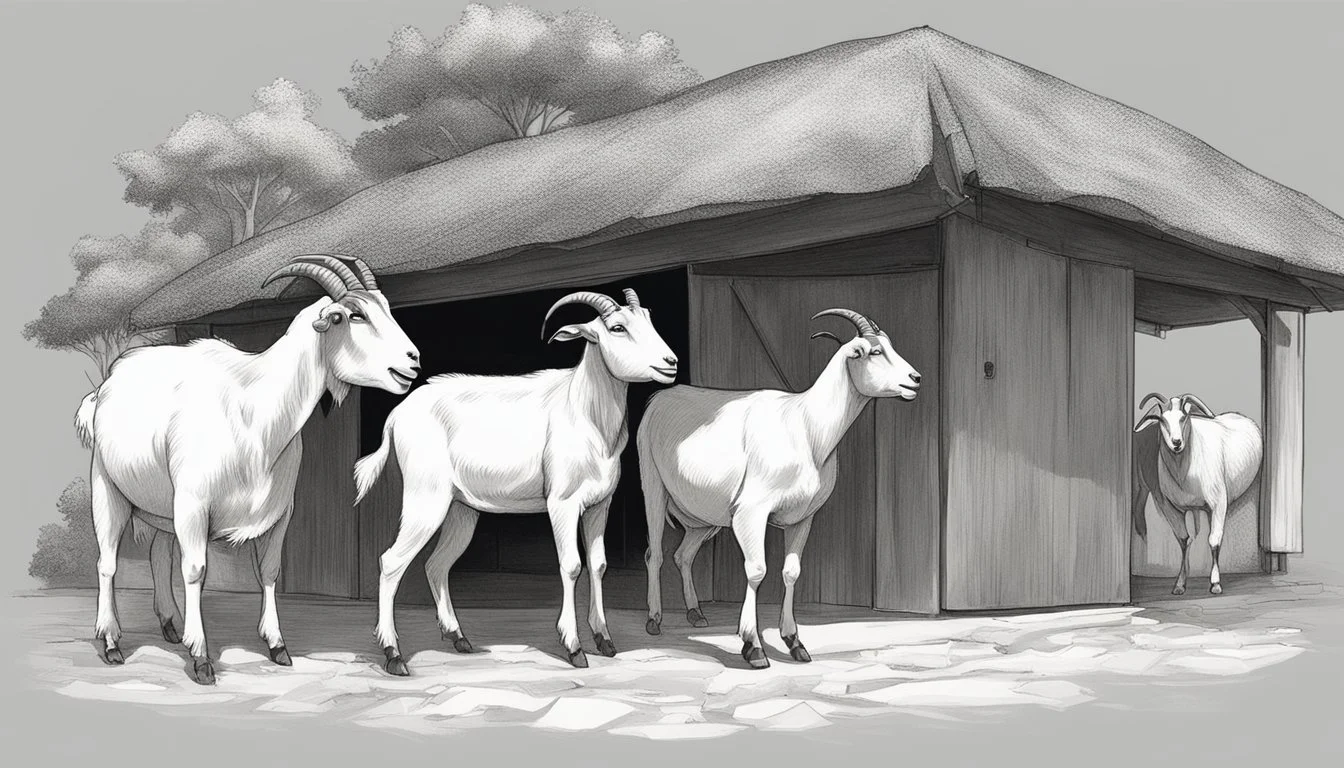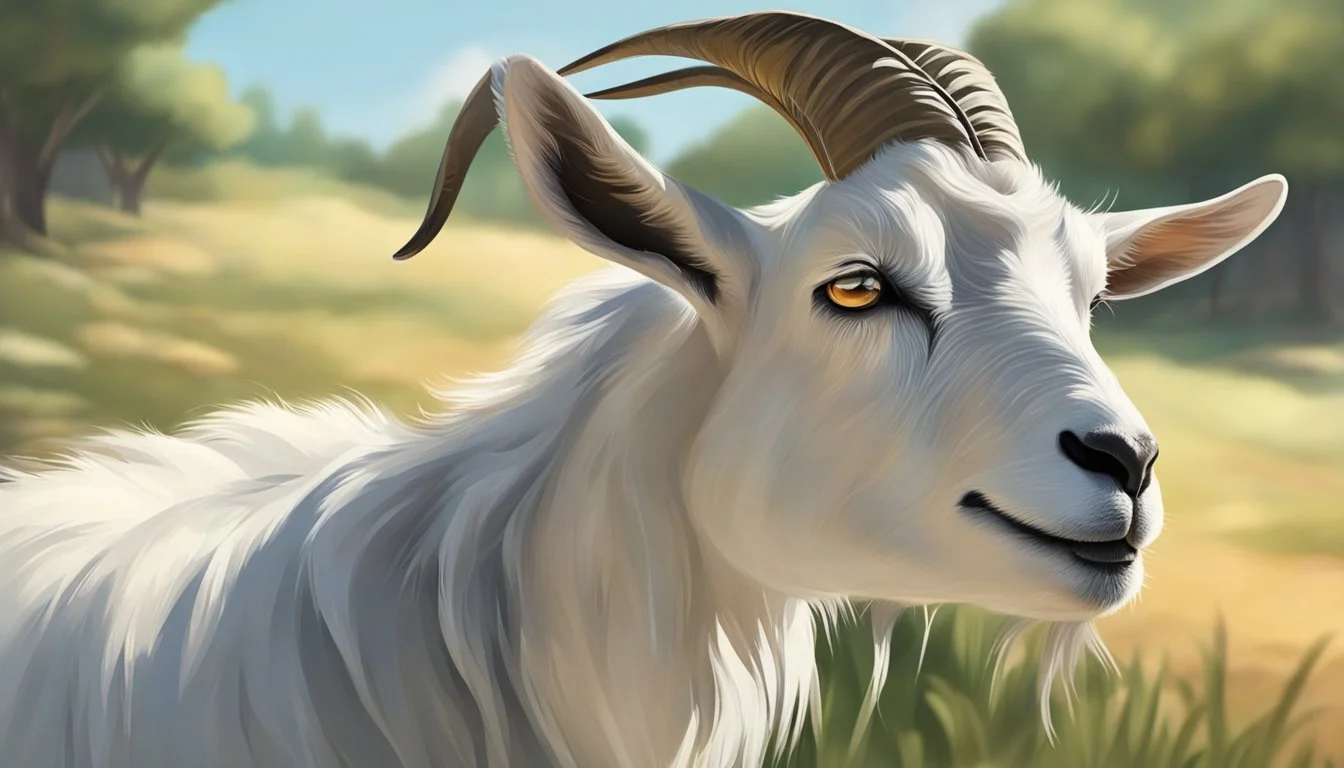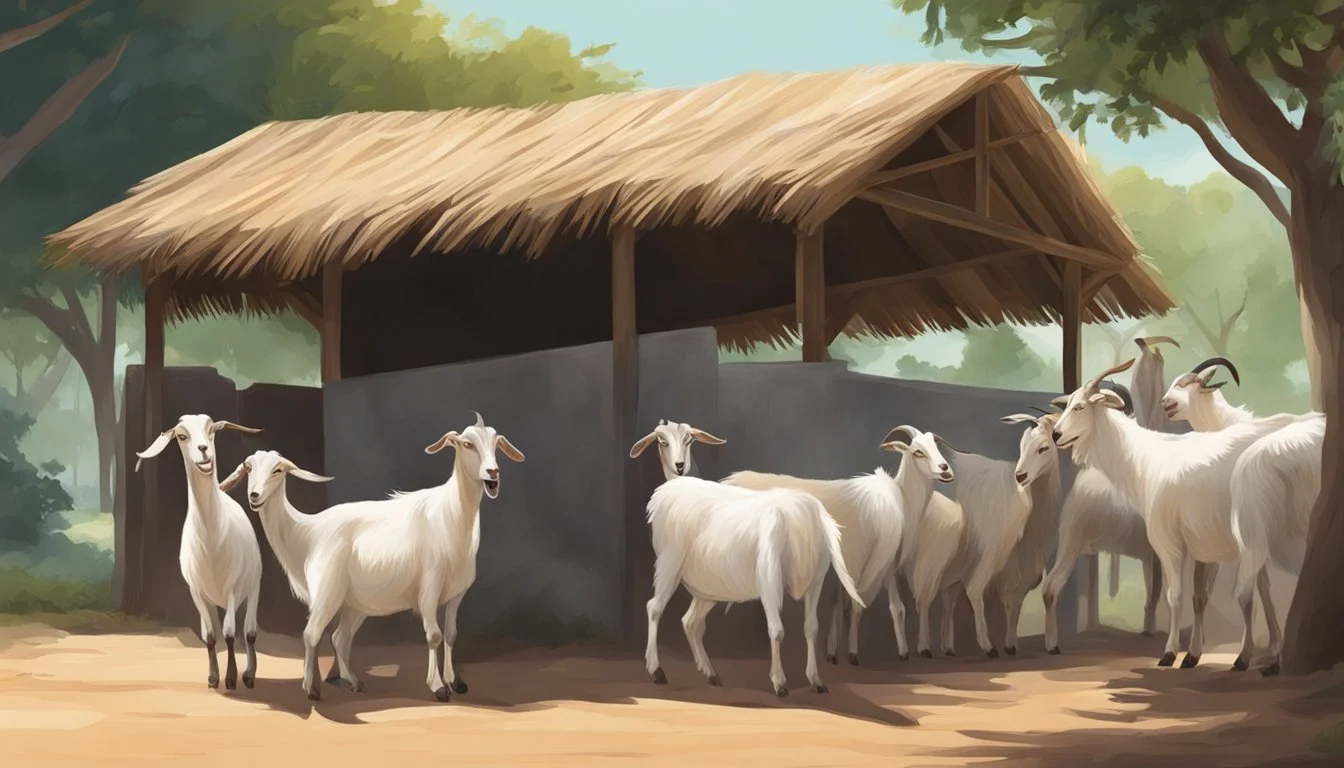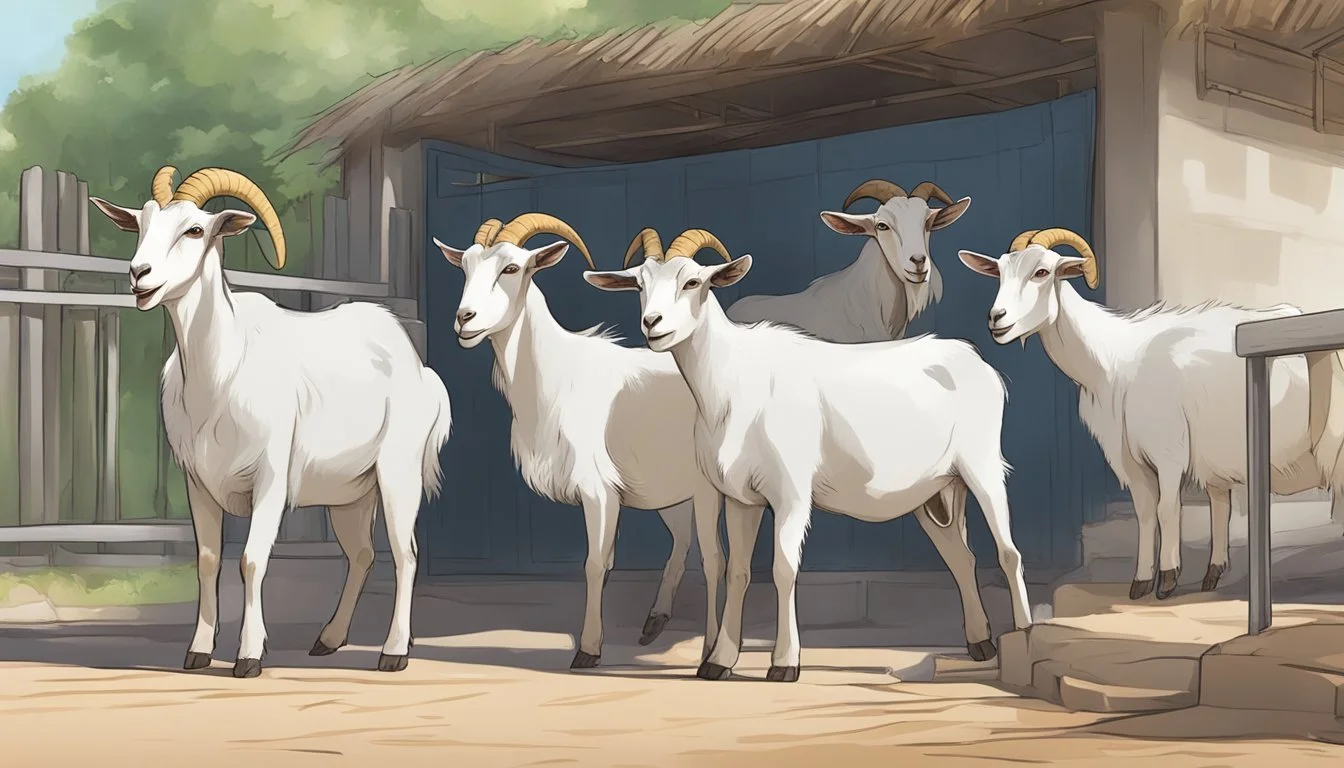What Are the Signs of Heat Stress in Goats and Strategies for Prevention
Heat stress in goats is a serious concern for livestock owners, as it can lead to significant health problems and affect the overall productivity of the herd. Signs of heat stress in these animals include rapid breathing, panting, lethargy, and a decreased appetite. Goats may also seek out shade more frequently and show signs of discomfort, such as restlessness and vocalizations. As ruminants, their body temperature regulation is crucial, and any deviation due to external temperatures can result in stress that impacts their well-being.
Preventing heat stress in goats involves proactive management of their environment and health. Ensuring they have constant access to fresh, cool water is essential, as dehydration can exacerbate the effects of high temperatures. Providing adequate shade and ventilation, especially during the hotter parts of the day, helps to keep body temperatures within a safe range. Implementing heat abatement strategies, such as sprinkler systems or fans in barn areas, can also alleviate the impact of heat.
Recognizing and mitigating the risks associated with heat stress in goats is key to maintaining a healthy and productive livestock operation. Regular monitoring of weather conditions and goat behavior allows for timely interventions that can prevent the onset of heat stress. Through attentive care and an understanding of the physiological needs of goats, livestock owners can ensure the welfare of their animals even when temperatures climb.
Understanding Heat Stress
Heat stress affects goats both physically and behaviorally, potentially compromising their health and productivity. Recognizing and managing heat stress is vital for their well-being.
Defining Heat Stress in Livestock
Heat stress in livestock occurs when animals are unable to dissipate enough heat to maintain a balanced core body temperature. In goats, this can result from high environmental temperatures, humidity, or inadequate shade and ventilation. These conditions lead to discomfort and can affect goats' health and production negatively.
Heat Stress Impact on Goat Health
Goats experiencing heat stress may exhibit a decline in both growth and reproduction. Their immune systems can become compromised, increasing susceptibility to diseases. Dairy goats in lactation often experience reduced milk production, while meat goats may show slowed growth rates.
Physiological Responses to Heat Stress
The physiological signs of heat stress include an increased respiration rate and heart rate as goats attempt to cool themselves through rapid breathing and enhanced blood flow. Heat-stressed goats also often have elevated body temperatures and may experience an imbalance in electrolytes and acid-base status.
Behavioral Responses to Heat Stress
Behaviorally, goats under heat stress may spend more time seeking shade, reduce their activity, and exhibit changes in feeding behavior, such as decreased feed intake. They might also increase water consumption to combat dehydration associated with the stress.
To learn how to prevent heat stress in goats, it is important to recognize these physiological and behavioral signs and take appropriate management actions.
Identifying Signs of Heat Stress in Goats
Goats showing signs of heat stress require immediate attention, as their health and productivity can be severely affected if not managed promptly. Here are specific indicators to watch for divided into physical distress, respiratory changes, and effects on reproductive and production capabilities.
Physical Signs of Distress
Elevated Rectal Temperature: Goats normally have a rectal temperature between 101.5°F and 103.5°F. During heat stress, their temperature can rise significantly. Excessive Panting: Unlike humans, goats sweat minimally; they rely largely on panting to cool down when overheated, which can appear as rapid, shallow breathing. Sweating: While less common, some goats do exhibit sweating as a response to high temperatures, particularly around the nose and under the tail.
Changes in Respiration and Heart Rate
Accelerated Heart Rate: Heat-stressed goats may experience an increase in heart rate as their bodies attempt to dissipate heat. Rapid Breathing: Observing their breathing rate is critical; rapid, labored respirations can signify that a goat is struggling to regulate its body temperature efficiently.
Reproductive and Productive Consequences
Decreased Milk Production: Lactating goats often show a drop in milk production due to heat stress, compromising both their health and farm productivity. Breeding Issues: The heat can adversely affect both male and female goats’ fertility; it may lead to reduced conception rates and interrupted breeding cycles.
Factors Affecting Goat Susceptibility to Heat Stress
Several factors determine how goats are affected by heat stress, including their surrounding climate, breed and species characteristics, and their nutritional and health status. These aspects can significantly influence the goats' ability to cope with high temperatures and high humidity.
Role of Climate and Environment
Goats are generally resilient animals, but the climate can have a profound effect on their susceptibility to heat stress. High temperatures combined with high humidity create a challenging environment for heat dissipation. It has been observed that when the Temperature Humidity Index (THI) surpasses 80, goats start to experience heat stress, and their milk production begins to decline. Breeding season also plays a role in this respect, with heat stress potentially reducing reproductive efficiency.
Influence of Breed and Species
Different goat species and breeds possess varying levels of tolerance to heat. For instance, Boer goats, a meat-producing breed, may exhibit higher resilience to hot environments. Conversely, dairy goats are often more susceptible to heat stress, which can manifest through a decrease in milk yield and quality. It's critical to consider breed-specific characteristics and adapt management practices to minimize heat stress impacts accordingly.
Nutritional and Health Status
The health and nutritional status of goats are crucial in determining their ability to withstand heat stress. Animals in good health and receiving proper nutrition can regulate their body temperature more effectively. Nutritional strategies might include altering feeding times to cooler parts of the day or providing a diet that meets the energy demands while considering the reduced appetite that often accompanies heat stress. Consistent access to clean, fresh water is also essential for maintaining hydration and aiding thermoregulation during hot weather.
Preventing Heat Stress in Goats
Preventing heat stress in goats hinges on proactive environmental control, adequate hydration, and dietary strategies. Thoughtful shelter design and effective behavioral management play key roles in ensuring the welfare of these animals.
Appropriate Shelter and Housing
Providing shelter with sufficient ventilation is crucial for goats to escape the heat. Structures should be designed to create shade while allowing air to circulate freely, thereby reducing the temperature. For optimal comfort, fans or other cooling systems can be incorporated to enhance airflow.
Design shelters with ample ventilation and shade.
Consider installing fans or evaporative cooling systems for additional heat relief.
Maintaining Hydration and Diet
Fresh water availability is vital to prevent dehydration. Goats require continuous access to clean drinking water to maintain normal physiological functions and cool down through evaporation. Enhance water intake by ensuring it is cool and palatable, and consider adding electrolytes to the water during extreme heat.
Supply unlimited access to clean, fresh water.
Add water stations to encourage hydration and offer electrolytes to replenish lost minerals.
Environmental and Behavioral Management
Alter feeding times to cooler parts of the day to minimize heat buildup and encourage better feed intake. Stress-free transportation practices are essential, particularly avoiding the heat of the day for any movements. Regular monitoring for any signs of heat stress helps in taking timely action to uphold their welfare.
Feed goats during the cooler morning or evening hours.
Transport goats considerately, avoiding peak heat periods.
Cooling and Heat Dissipation Strategies
Effective heat stress management in goats involves strategies that enhance the animals' natural cooling processes and improve their ability to dissipate heat. These methods focus on promoting efficient heat removal through evaporative cooling and other supplemental approaches to maintain normal physiological function.
Evaporative Cooling Systems
Evaporative cooling systems utilize the principle of heat loss through the evaporation of water to cool the surrounding air and, consequently, the animals in a given space. In goats, increasing evaporative heat loss can be achieved by installing misters or sprinklers in a well-ventilated area. These systems are particularly effective in reducing excessive panting and salivation, indicative of heat stress. Additionally, ensuring a steady air movement helps enhance the evaporation process, further aiding in temperature regulation.
Effective Evaporative Cooling System Components for Goats:
Sprinklers or misters
Adequate ventilation
Regular system maintenance
Supplemental Cooling Methods
Supplemental cooling methods complement evaporative systems and might include providing shade, fans, or cooling pads. These methods can help reduce the respiration rate and circulation load associated with thermoregulation. Another integral part of keeping goats cool is to monitor and adjust their dry matter intake, as heat stress can reduce their appetite. Additionally, ample clean drinking water is essential to maintain hydration, aiding in heat dissipation and preventing dehydration.
Climate Management Actions:
Allocate shaded areas to protect from direct sunlight
Use fans for increased airflow
Implement cooling pads where applicable
Adjust feed schedules to cooler parts of the day
Provide unlimited access to fresh water
Management and Care for Heat-Stressed Goats
Effective management of heat stress in goats hinges on vigilant monitoring and the implementation of appropriate immediate and long-term care strategies. Ensuring the well-being of a goat herd during periods of high temperature is critical to maintain their overall health.
Monitoring and Immediate Care
Immediate action can mitigate the impacts of heat stress on goats. They exhibit certain physiological signs indicative of discomfort, such as panting, lethargy, or a decreased appetite. When these signs are observed, immediate measures, such as providing ample clean water to drink and making sure there's enough shade available, are crucial. Using a drench gun to administer electrolytes can also help rehydrate goats quickly and effectively.
Long-Term Health and Welfare Considerations
For sustained goat health and welfare, integrating products like Biozyme, DuraFerm, or Amaferm into their diet offers long-term benefits. These supplements can enhance rumen health and feed efficiency, potentially alleviating some of the issues related to heat stress. In addition to this, providing a balanced diet that is rich in vitamin E and essential minerals helps strengthen the goats' overall resilience against stressors. Moreover, ensuring a well-ventilated and comfortable living environment for the goat herd is key in preventing heat stress from becoming a reoccurring issue.
Impact of Heat Stress on Goat Reproduction
Heat stress has a considerable impact on goat reproduction, affecting critical aspects such as breeding efficiency and the viability of offspring. This section explores two key facets: how heat stress influences breeding and mating behaviors, and its effects on fetal development and offspring survival.
Effects on Breeding and Mating
Heat stress leads to a discernible decline in reproductive performances. Breeding behaviors and mating success rates are notably disrupted, with variations depending on the goat breed. Factors such as reduced sperm production and compromised sperm motility greatly affect overall breeding success. Moreover, both males and females exhibit decreased libido during periods of high temperatures, which can lead to a decreased number of matings.
Fetal Development and Offspring Survival
Embryo survival and fetal development are similarly jeopardized by elevated temperatures. There is evidence that heat stress hampers embryonic growth, leading to a high rate of embryonic mortality. Offspring survival rates are likely to be lower as a consequence of the compromised in utero environment caused by the mother's heat stress. In subtler cases, developmental irregularities in fetuses may occur, with potential long-term effects on the health and productivity of the offspring.
Advanced Topics in Heat Stress Management
In managing heat stress in goats, understanding the intricacies of their thermoregulatory responses and adjusting management strategies based on biochemical and hormonal changes is crucial for stability and conception rates.
Studying Thermoregulatory Responses
Goats exhibit a range of thermoregulatory responses to maintain homeostasis when exposed to heat stress. These responses include an increased respiration rate, which is a part of their evaporative cooling mechanism. Research has shown that the respiratory frequency can serve as an effective indicator of the extent of heat stress and, consequently, the well-being of the animals. Through systematic observation and recording of these responses, producers can gauge the stability of the environmental conditions and the effectiveness of heat stress alleviation measures.
Biochemical and Hormonal Adjustments
Biochemical and hormonal adjustments are part of a goat's coping mechanisms under heat stress. For example, the HPA axis (hypothalamic-pituitary-adrenal axis) mediates a series of hormonal releases that lead to increased secretion of corticosteroids to manage stress. Concurrently, the TSH (thyroid-stimulating hormone) levels may also be affected, which can influence metabolic rates. Goats undergoing heat stress might exhibit elevated levels of NEFA (non-esterified fatty acids) which indicate mobilization of fat reserves. Maintaining control over these hormonal and biochemical changes is associated with better heat alleviation strategies and, as a result, has implications on reproductive hormones like LH (luteinizing hormone) impacting conception rates. Addressing these changes through management practices is essential for sustaining goat performance during heat-stressed periods.
Evaluating the Broader Implications
The sustainability and efficiency of goat production are significantly affected by the management of heat stress, factoring in animal welfare and climatic adaptations for long-term success.
The Future of Goat Production and Climate Adaptation
Elevated temperatures and inconsistent climatic conditions pose a challenge to the genetic potential and growth rates of goats. Adaptations to climate—both through genetic selection and improved management systems—are critical for maintaining production performance. Strategies include developing breeds with a higher tolerance to heat stress and implementing farm designs that ensure poor ventilation is addressed. These adaptations will be essential for the stability of goat production in the face of a changing climate.
Livestock Welfare and Sustainable Farming Practices
In sustainable farming systems, animal welfare is a top priority, particularly under high temperature scenarios that lead to heat stress. Farmers can reduce the impact through proactive measures such as providing shade, abundant water, and cooling systems. Emphasizing animal welfare aligns with greater sustainability goals, reducing environmental footprints and maintaining high production standards. Programs and policies must also promote best practices in welfare and sustainability to support the livestock industry through changing climatic conditions.







